The films of Frank W. Moorhouse
By R. Hillier - Librarian, State Library of Queensland | 30 June 2016
The State Library of Queensland has recently received donation of a collection of 9.5mm films relating to the Moorhouse Family. The majority of these films were created by Frank W. Moorhouse in the early 1930s.
Born in Taringa in 1895, Frank Moorhouse initially trained as a teacher and either side of service in World War One he taught at a number of schools around Queensland. Following the war he balanced his teaching with study at University of Queensland, initially achieving a Bachelor of Science with honours in oceanography before eventually attaining a Master of Science degree. It was in the field of marine science and related industries that he made a career.
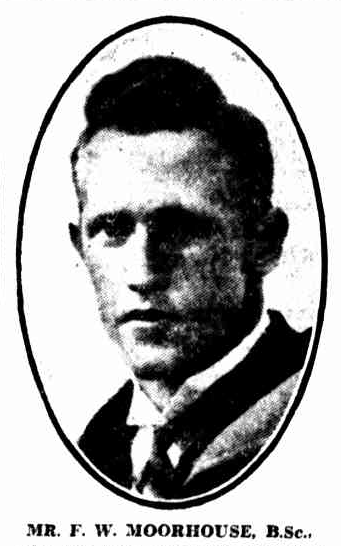
Frank W. Moorhouse. The Brisbane Courier, July 10, 1928.
In 1928-1929, Moorhouse was Queensland University's representative accompanying a pioneering British university study of Great Barrier Reef marine life during which the party lived on the reef for an entire year. Through the early 1930s, initially as a marine biologist for the Queensland Government Moorhouse focused his energy on exploring the commercial potential of reef life such as trochus, sponges and beche de mer. In this period, as a government employee, he spent six months during 1930-1931 carrying out study on reefs around Mer (Murray Island) in Far North Queensland. During this time Frank made use of a recently purchased 9.5mm Pathe Baby camera and it is from this period that the bulk of this collection originates. More than half of the collection’s 16 short, silent films consist of footage filmed by Moorhouse on and around Mer.
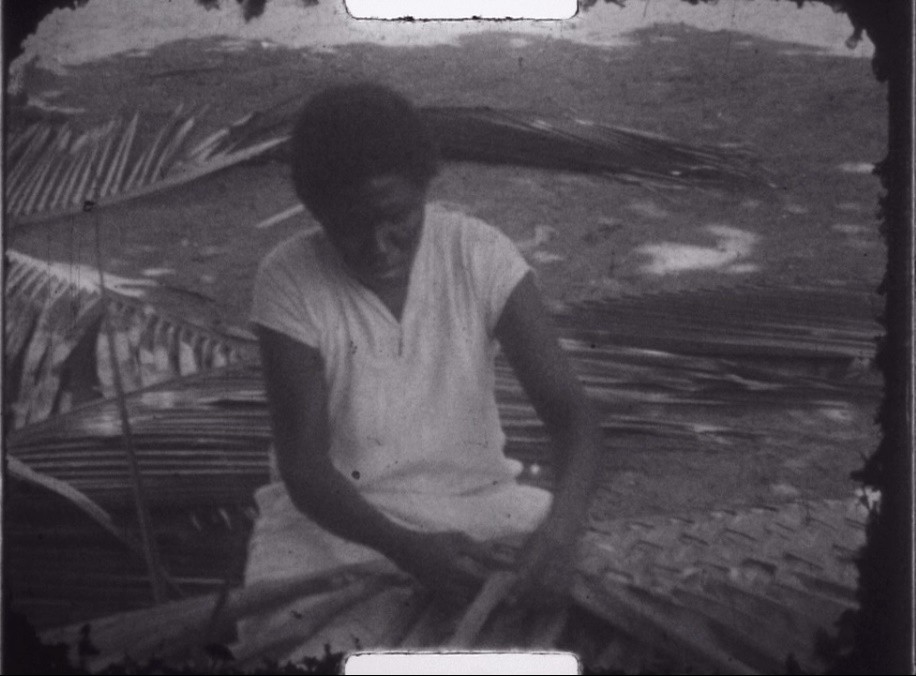
Weaving palm leaves on Mer (Murray Island), 1930-1931. Still from 30149 Frank W. Moorhouse Films, John Oxley Library, State Library of Queensland.
The films show snippets of daily life and special occasions on the island including a wedding, parades, house building, dancing and weaving amongst footage of scenery and general social interaction. Scratchy and jerky, the films are not high quality, but they do have significant value and provide a rare view of life on early twentieth century Mer. The films also include plenty of footage taken travelling north on the train, views from boats and some as yet unidentified urban locations.
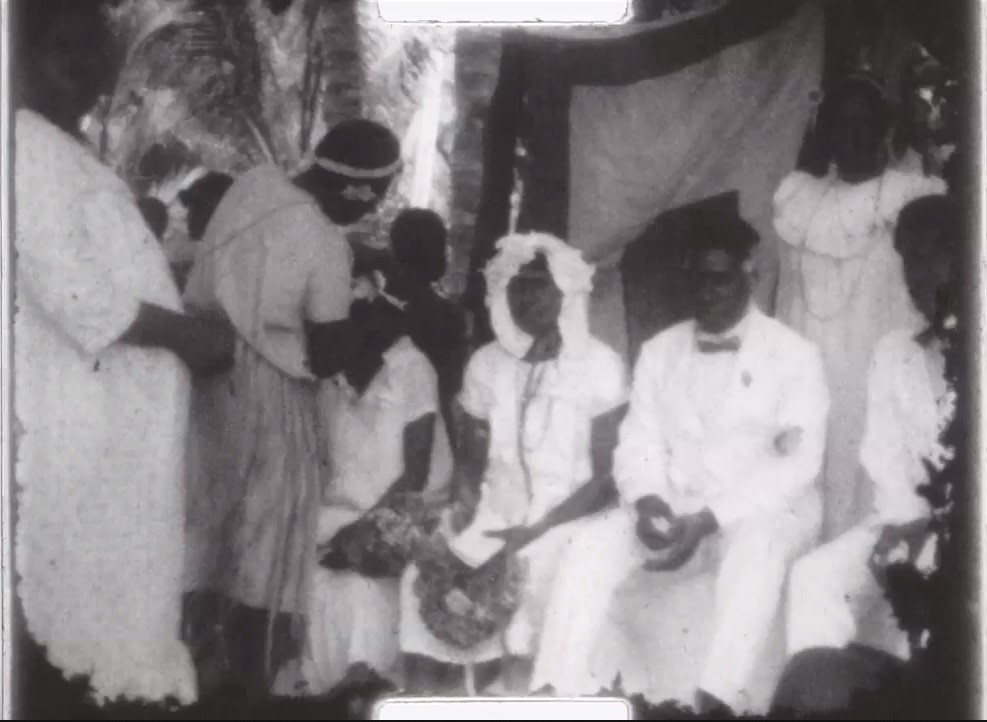
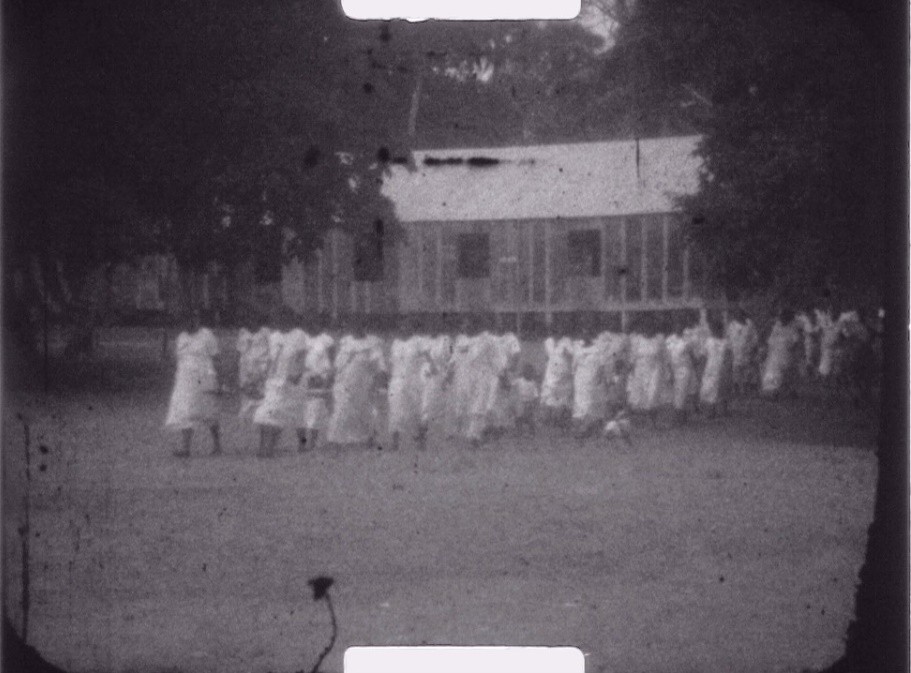
A parade on Mer (Murray Island), 1930-1931. Still from 30149 Frank W. Moorhouse Films, John Oxley Library, State Library of Queensland.
Following on from his work on Mer, Moorhouse ventured out on his own to further his attempts at making the harvesting of reef life commercially viable. His efforts were fraught with difficulty and by the mid 1930s he had moved away from the idea and taken a position with the Federal Government as a marine biologist. Soon after, in 1936, Frank Moorhouse was appointed Chief Inspector of Fisheries and Game in South Australia and left Queensland for good.
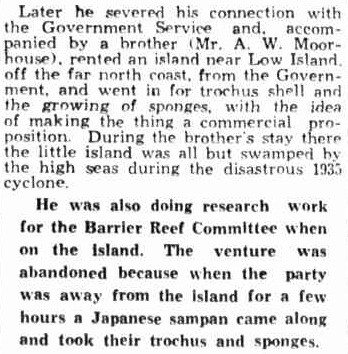

Headline announcing appointment of Frank W. Moorhouse as Chief Inspector of Fisheries and Game in South Australia. The Telegraph (Brisbane) newspaper, 7 April, 1936
Before going interstate, Frank stored his trusty camera and these films with family where they remained for the better part of a century. Curiously, at least one of the films in the collection is shot during the 1950s - much later that the rest. Presumably, the Moorhouse Family dusted off the old camera and put it to use around this time. This later footage includes scenes taken at the Strathpine race track ca. 1955.

Jim Johnson’s MG TC at Strathpine Race Track, ca. 1955. Still from 30149 Frank W. Moorhouse Films, John Oxley Library, State Library of Queensland.
Frank W. Moorhouse passed away in 1967.
Footage from 30149 Frank W. Moorhouse Films 1930-1956 can be viewed online via our catalogue.
R.Hillier - Librarian, State Library of Queensland
Comments
Your email address will not be published.
We welcome relevant, respectful comments.